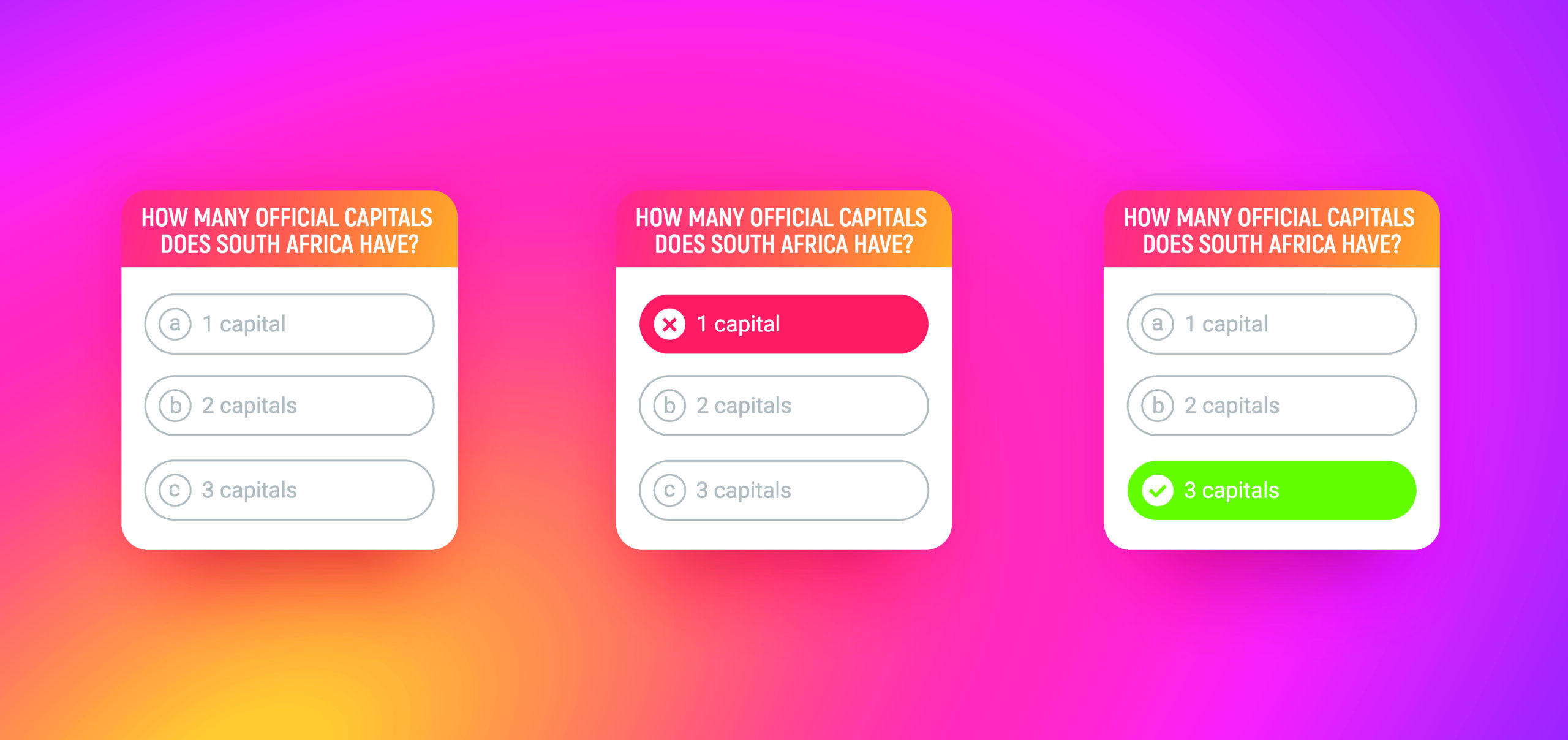
Interactive Content: Engaging Audiences in a New Dimension
Did you know interactive content generates twice as many conversions as passive content? Standing out requires more than traditional engagement strategies. As conventional digital engagement methods begin to plateau, innovative strategies like interactive content are revolutionizing how brands connect with their audiences.
Digital marketing agencies, particularly those specializing in social media marketing, swiftly adopt interactive content to captivate audiences in ways that static posts and standard ads simply cannot match. By incorporating interactive elements such as quizzes, polls, augmented reality (AR), and gamification, marketers add a dynamic layer to their efforts, making content memorable and significantly more enjoyable for their audience.
This interactive approach provides deeper insights into consumer preferences and behavior, contributing to enhanced marketing strategies and performance.
Welcome to the World of Interactive Content Marketing
Interactive content marketing is a strategic approach that transcends the passive consumption of information, engaging users in an active and dynamic interaction with content. This method has become increasingly crucial as businesses strive to capture and maintain the attention of audiences bombarded with numerous messages daily.
Key Elements of Interactive Content Marketing
Interactive content transforms passive viewers into active participants.
- Quizzes and Polls: These tools are fun, engaging, and effectively gather data about preferences and opinions. Quizzes can be tailored to reflect the user’s interests and provide personalized results, while polls can quickly gauge public opinion, making both formats highly engaging and valuable for audience segmentation.

- Gamification: By incorporating game mechanics into non-game environments, such as points, badges, leaderboards, and challenges, gamification increases user engagement by tapping into the natural human desire for competition and achievement. This can lead to increased time spent on your platform and deeper brand loyalty.

- Augmented Reality (AR): AR enhances the real world with digital overlays, enabling users to interact with virtual items in a real-world context. For example, retailers use AR to let customers visualize how furniture might look in their homes before purchasing, significantly enhancing the shopping experience.
 4. Interactive Videos: These videos allow viewers to interact with the content through embedded links, branching paths (choose your adventure style), and other engaging features. This interaction boosts viewer engagement and can provide valuable pathways more profound into the marketer’s content ecosystem.
4. Interactive Videos: These videos allow viewers to interact with the content through embedded links, branching paths (choose your adventure style), and other engaging features. This interaction boosts viewer engagement and can provide valuable pathways more profound into the marketer’s content ecosystem.
5. Interactive Infographics: Unlike static infographics, interactive versions allow users to explore data points more deeply at their own pace, which can help retain information more effectively. They often feature clickable areas that reveal more detailed information or comparative data sets.
6. Branching Scenarios: Often used in learning environments, branching scenarios allow users to navigate different paths based on their choices, leading to different outcomes. This is effective in training and education, as it provides a safe space for decision-making practice.
7. Virtual Reality (VR) Experiences: VR offers a fully immersive experience, requiring a headset and often controllers. It’s used for everything from virtual tours of real estate to complex training simulations in industries like aviation and healthcare.

- Interactive eBooks and Whitepapers: These documents include embedded audio, video, and assessment tools, transforming traditional reading experiences into engaging learning journeys.
Benefits of Interactive Content Marketing
- Enhanced Engagement: Interactive content requires active participation, which keeps users more engaged. This higher level of engagement increases the likelihood that users will absorb and act on the message, whether that action is sharing the content, pursuing further information, or making a purchase.
- Increased Time on Page: Interactive elements keep users on a page longer than static content. Spending more time interacting with content can lead to better SEO rankings and increased opportunities for conversion.
- Improved Data Collection: Marketers gather data on every click and interaction as users interact with the content. This data is invaluable for understanding user behavior and preferences and effectively segmenting the audience for future marketing campaigns.
- Greater Shareability: People are likelier to share interactive content because it provides a unique experience compared to standard posts or videos. This shareability enhances the reach and visibility of campaigns, spreading brand awareness more efficiently.
- Higher Conversion Rates: Interactive content can guide prospects through the sales funnel more effectively than static content due to its engaging nature. Interactive elements can prompt actions naturally and enjoyably, leading to higher conversion rates.
- Improved User Experience: Interactive content provides a richer user experience that can make content consumption more enjoyable and fulfilling. It stands out in a crowded content landscape, offering differentiation that can attract and retain customers.
Interactive content marketing represents a shift towards more dynamic and user-centric forms of communication. It allows brands to stand out in a crowded market by offering memorable experiences that foster a deeper connection with the audience. As technology evolves, so will the methods and effectiveness of interactive content, making it a crucial component of any modern digital marketing strategy.
Leveraging Interactive Content in Digital Marketing
To harness the full potential of interactive content, businesses must partner with adept digital marketing and social media agencies that understand the intricacies of user engagement. These agencies can:
– Develop bespoke interactive experiences tailored to the target audience’s preferences.
– Optimize interactive content for SEO to improve search rankings and drive organic traffic.
– Use analytics to measure performance and continuously refine content for better results.
– Leverage social media platforms to enhance user interaction and engagement.
The Future of Interactive Content
Advancements in technology are poised to significantly shape the future of interactive content, with artificial intelligence (AI), virtual reality (VR), augmented reality (AR), and other emerging technologies playing pivotal roles. These developments are expected to enhance interactive content’s personalization, immersion, and effectiveness, offering exciting opportunities for marketers to engage with their audiences in new and meaningful ways.
Integration of Artificial Intelligence (AI)
AI is set to revolutionize interactive content by enabling more personalized experiences. AI can analyze user data and behavior in real-time to deliver content tailored to the individual’s preferences, interests, and even current emotional state. For example, AI could dynamically change an interactive video’s storyline based on the user’s choices, providing a unique experience for each viewer. AI can also automate the creation of interactive elements, making it easier and more cost-effective to produce personalized content at scale.
Advancements in Virtual Reality (VR) and Augmented Reality (AR)
VR and AR are already transforming interactive content by creating deeply immersive environments where users can engage with content in three-dimensional space. The future will likely see these technologies becoming more mainstream as hardware becomes more accessible and affordable. VR can transport users to entirely new worlds, ideal for virtual tours, educational programs, and immersive gaming applications. AR, on the other hand, adds a layer of digital information to the real world, enhancing everyday experiences—from shopping with virtual try-ons to complex surgical procedures with overlaid guidance systems.
More Sophisticated Interactive Video Technologies
Interactive videos will continue to evolve, offering more complex branching paths and decision-based outcomes that are seamlessly integrated thanks to better software solutions and faster processing powers. Future interactive videos might include real-time interactions with AI-driven characters or live interactive elements that audiences worldwide can participate in simultaneously.
Enhanced Gamification
Gamification elements are becoming more sophisticated, moving beyond simple point systems and badges to incorporate more elaborate storytelling and role-playing elements that drive deeper engagement. The integration of AI can further enhance this by adapting challenges and rewards to the user’s skill level and past behavior, keeping the experience challenging and rewarding.
Improved Data Analytics and Feedback Systems
As interactive content becomes more complex, the data generated from user interactions becomes more voluminous and valuable. Future technologies will likely provide more advanced real-time tools for capturing, analyzing, and acting on this data. This will allow marketers to optimize campaigns on the fly and deliver even more precisely targeted content.
Increasing Accessibility
Technological improvements will also make interactive content more accessible to a broader audience. Innovations in language processing and adaptive user interfaces can help bridge language and disability barriers, ensuring that interactive content is inclusive for all users.
The Role of 5G and Edge Computing
The rollout of 5G technology and advancements in edge computing will reduce latency and increase the speed and reliability of online interactions. This will enable more complex and resource-intensive interactive content applications to run smoothly on mobile devices, thus broadening the reach and potential of interactive campaigns.
The future of interactive content marketing is bright, with endless possibilities for innovation. Marketers must stay informed about technological advancements and be ready to adopt new tools and strategies to leverage the full power of interactive content. This approach will maintain a competitive advantage and create more meaningful and engaging consumer experiences.
Transform Your Brand with Interactive Content Solutions
As we look toward the future of interactive content, it’s clear that staying ahead in this rapidly evolving field is crucial for maintaining a competitive edge and effectively engaging with audiences.
Mrkt360 is leading the way, harnessing the latest in AI, VR, and other emerging technologies to create customized, immersive experiences that transform passive viewers into active participants.
By embracing innovative strategies, Mrkt360 enhances user experience and boosts engagement, driving significant growth in digital marketing efforts.
Engage with us today at Mrkt360, and let’s bring a new dimension of interactivity to your brand’s digital presence.
Contact us now to unlock the potential of interactive content and watch your engagement rates soar as we tailor unique experiences that captivate your audience and drive results.



Sorry, the comment form is closed at this time.